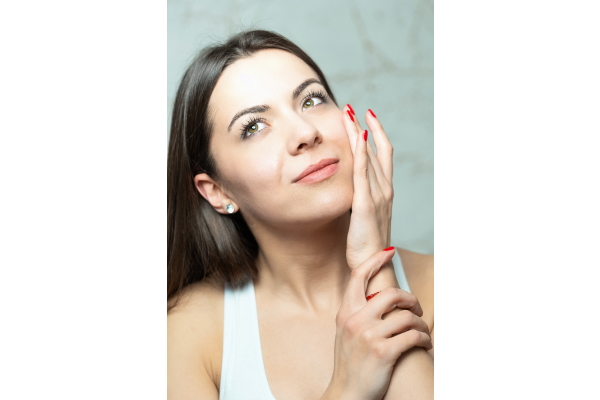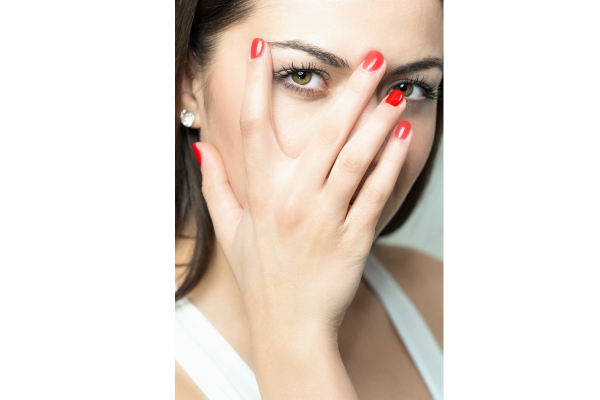The skin is the largest organ in the body, and its basic function is to provide a barrier between the internal and external environment. It also protects the body from harmful microorganisms, ultra-violet (UV) radiation, allergens, and irritants. The unique protective function of the skin is the result of its structure and composition, especially of the epidermis, the layer most exposed to the outside environment. The knowledge of the skin's structure and function is the key to its proper care. The basic cell component of the epidermis is keratinocyte. The stratum corneum (SC), the outermost layer of the epidermis, differentiate (lose nucleus) into dead cells named corneocytes. The structure of SC resembles a "brick wall" of cells in which corneocytes represent "bricks, and intercellular lipids represent "mortar“. The skin's function as the barrier depends on the integrity of SC (1).
Intercellular lipids made of ceramides, free fatty acids and cholesterol ensure the barrier permeability. The precursors of ceramides, free fatty acids, and part of cholesterol are released into the deeper layers of the epidermis. Sebaceous glands secrete the remaining lipid fractions as sebum into the skin’s surface. Among the free fatty acids, there are palmitin, stearin, behenic, etc., less represented omega-9 (oleic acid), omega-3 acids (eicosapentaenoic acid and docosahexaenoic acid), and omega-6 acids (arachidonic and linoleic). SC hydration is the key to its integrity. The components of Natural Moisturizing Factor – NMF placed inside corneocytes also help SC hydration. NMF components are free amino acids, pyroglutamic acid, milk acid, urea, peptides, glucose, citrates, glycerol, etc. (1). Although the structure and functions of the skin are the same regardless of age, race, or sex, there are differences defined by the genetics and ethnicity, and they determine the skin type. Knowing one’s skin type is the key to its proper skincare.
The skin type is determined by the amount of fats created in sebaceous glands and the amount of intercellular lipids. T-zone is the central facial area in the shape of the letter T formed by the forehead, nose, and chin. In general, the skin gets drier as it gets older due to the decreasing production of fats/lipids. Depending on the amount of oils/lipids the skin produces, we distinguish four basic skin types: normal, dry, oily, and combination. Sometimes sensitive skin is categorized as a skin type, but it shows the condition of the skin, whereas doctors consider acne as a disorder. All skin types need proper cleansing, exfoliation, and hydration. It is a challenge to determine every person’s skin type. (2).

NORMAL SKIN
Normal skin characterizes a well-balanced sebum production and moisture content, and it is important to maintain the balance with proper care. Depending on the environmental conditions, this ratio may vary, so the normal skin type includes slightly dry and slightly oily skin. Follicles are normal size and the skin has no blemishes. It is typical to have follicles whose sizes vary from small to medium only at the edges of T-tone alongside the nose. Follicles are usually not very visible toward cheeks or external parts of the face. (2) The skin is clean, finely textured, flexible, smooth, well-vascularised, and with ideal pH. (3).
DRY SKIN
Dry skin does not produce enough lipids. Follicles are usually small and the amount of sebum is minimal. The true indicators of dry skin are hardly visible or very small follicles. The natural sebum secretion in follicles helps to protect skin against external influences and ageing. Dry skin needs extra care due to the lack of natural protection. Dry skin is more sensitive because the acid barrier and barrier function are impaired due to the lack of lipids. Proper care of dry skin involves the stimulation of sebum production and protection of superficial skin. Occlusive products are heavy, stay on the surface of the skin, and thus reduce water loss. The products retain moisture and protect the uppermost layer of skin that fights against drying out. (2).
DRY SKIN VERSUS DEHYDRATED SKIN
Dehydration or water loss occurs in some people together with dry skin, but it is a condition that can happen in all skin types. Dehydrated skin lacks water, whereas dry skin lacks lipids. It is important to remember the distinction as even oily skin can become dehydrated and it would need hydration. Dehydrated skin looks thin or scaly with a tight and dry sensation. It is sometimes described as uneven or crepey like rough paper. The skin that needs moisture absorbs products very quickly. Different internal and outside factors like medications, alcohol and caffeine consumption, sun exposure, excess desquamation or heavy products can cause skin dehydration. Taking a lot of water and proper skincare that involves skin hydration with moisturizers and humectants can help reduce the negative effects of dryness and dehydration. (2).
OILY SKIN
Oily skin, known as lipid skin, is characterized by increased sebum production. The follicles are large and contain more sebum (2, 3). If the follicles are visible or enlarged over the whole face, the skin can be classified as oily. Oily skin demands more cleansing and exfoliation than other skin types. This type is prone to imperfections as the pores get clogged easily with sebum and dead skin cells. Excess oil and dead skin cells accumulating on the skin’s surface make the skin look thick and pale (2). The emergence of blotches and comedones are common (2, 3). Proper skin-care routines are very important as well as balancing sebum production by applying appropriate cosmetic treatments and products. Excessive cleansing can worsen the skin condition due to removing of the acid barrier and skin irritation. The skin, stripped of its natural oils, becomes uneven and activates protective mechanisms. It can cause your oil glands to overcompensate and create even more oil on the surface (2).
Regardless of skin type, the aim is to achieve the balance of the barrier function. Educating clients, especially teenagers with hormonal imbalances, about the proper skin care will contribute significantly to the improvement in skin’s appearance. The right exfoliation treatment and water-based hydration will help maintain oily skin clean and balanced. (2). Oily skin type has a positive side; it ages more slowly because of the oils that act as a shield. On the other hand, oily skin is more prone to acne, so the people with the oily skin type often need professional, medicinal approach. However, after deep cleansing and regular skin care, one can notice visible and significant improvements. (2).

COMBINATION SKIN TYPE
Combination skin type can be oily, dry, or oily and normal at the same time. T-zone in the middle part of the forehead, nose, and chin is oilier than other parts. This area has more sebaceous glands and larger pores. Other areas may be either normal or dry, or scaly due to dehydration or accumulated dead skin cells (2, 3). Key indicators of this skin type are visible pores (medium size or enlarged) in the cheeks, outside T-zone. Combination skin needs balancing out and therefore requires much more care than normal skin. It is necessary to achieve a balance between oils and water by treating oily and dry facial areas. Proper skin care routine includes cleansing and regular exfoliation that will help to cleanse the skin and reduce imperfections. Water-based products are the best choice for combination skin. Heavy, rough products, over-cleansing, and rough exfoliation should be avoided for all skin types (2).
SENSITIVE SKIN
Sensitive skin type is more common nowadays. It is caused by frequent skin exposure to external stimuli, stress, sun, and other harmful factors. Sensitive skin is a condition, but it may also be inherited through genetics (2). Sensitive skin is characterized by cracked, thin skin, and redness (2, 3). North European descendants tend to have pale, fair skin that is thinner and more sensitive. It blushes easily and can become red due to blood circulation, just beneath the skin. However, people with darker skin can naturally have sensitive skin, but it is not very noticeable. Sensitive skin gets easily irritated by products and when exposed to heat or sun (2).
Teleangiektazi or cupreous skin with red dilated capillaries is common in sensitive skin type. Rosacea or vascular conditions are common diseases. Sometimes these conditions are protective, visible reactions that act as a warning that something irritates the skin. Fragile or thin skin can also be caused by ageing or medical treatments. Rosacea or vascular conditions usually affect sensitive skin. It can become scaly because of bad weather conditions (2). Our skin may react and get irritated due to harmful factors such as chemicals, heavy, and rough products, or heat. Proper skin care management for sensitive skin means extra skin protection against external factors.
Finding the right skincare routine for sensitive or irritated skin is very difficult due to the skin’s low tolerance to products and stimuli. Products and treatments that can further irritate the skin should be avoided. Excessive rubbing, heat, exfoliation, or extraction can damage skin and increase redness. Sensitive skin must be treated very gently, with non-irritating, and calming products. Numerous companies have designed the collections specifically for sensitive skin. It is important to discover what causes the skin’s sensitivity through detailed analyses. The aim is to find if it is the skin’s natural condition or some exposure that causes sensitivity. Proper skin care management can soothe, relax, and protect the skin (2).
Reference:
1. Lin TK, Zhong L, Santiago JL. Anti-Inflammatory and Skin Barrier Repair Effects of Topical Application of Some Plant Oils. Int J Mol Sci. 2017;19(1).
2. Gerson J, D’Angelo J, Deitz S, Lotz S. Milady Standard Esthetics: Fundamentals. 11th ed. New York: Cengage Learning; 2012.
3. Gupta R. Skin Care. New Delhi: Diamond Pocket Books (Pvt.) Limited; 2004.










